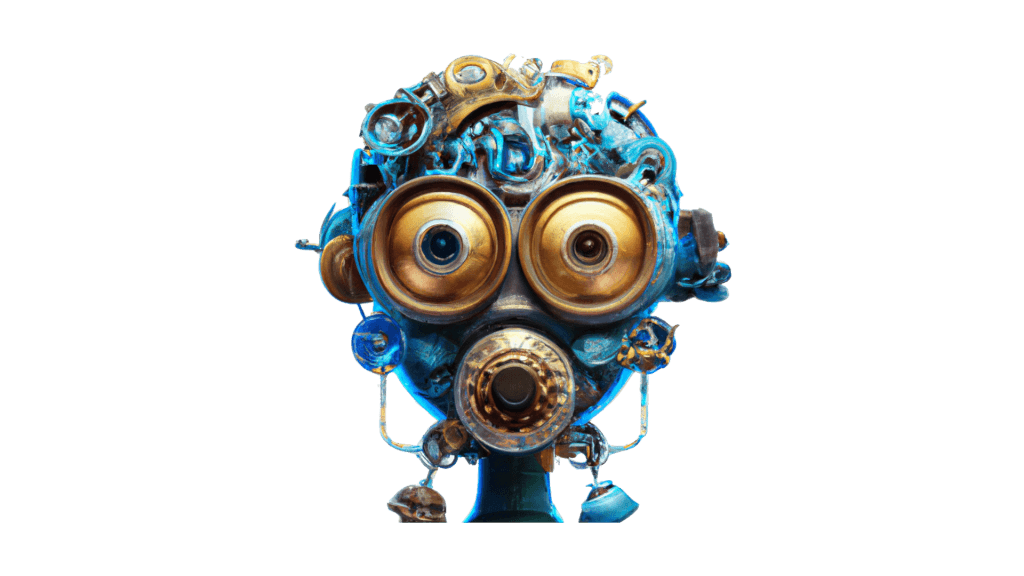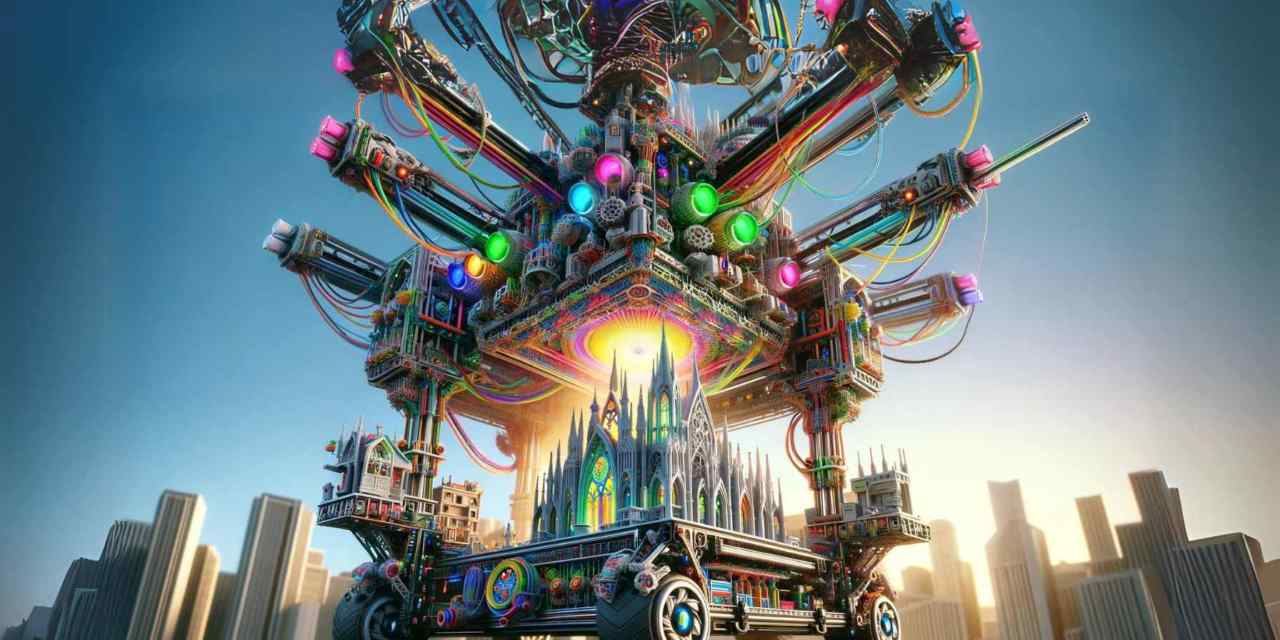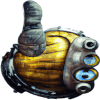Here’s what a Mortenson Domotica house printer looks like.
Maybe you’ve seen a hydraulic gantry crane at a shipyard? A quartet of enormous vertical wheeled legs forms the corner posts of an open rectangular framework. The legs are connected at their tops by four beams at right angles to those they touch. The crane can position itself over an object, send down its grapple from its cross beams, lift any cargo that fits within its footprint, and wheel it into a new location.
Well, there’s no hook for lifting in the house printer; the four horizontal cross beams–actually there are sometimes six or more girders–contain the myriad printheads, and the beams themselves move vertically up and down the leg framework, from ground level to two or three stories high, depositing the hotmelt plastic according to the instructions in the house printer’s brain. Add in a giant hopper holding the raw materials, and you’ve got the whole mechanism. Oh, yes, the beams and printheads can also adjust their relations to each other along many axes, assuming many different configurations, coming closer together or moving further apart.
A single Mortenson Domotica Model 2040-X can build a one-thousand-square foot multi-story residence with all wiring, plumbing and HVAC installed in roughly twenty-four hours. They’re like house-laying hens, dropping a building and moving on.
My name is Steve Benchman, and I was in charge, during the seven-to-three day shift, of a flock of ten of these giant machines. My co-workers on the other shifts were Gloribell Shoop and Santiago Cruz, good and competent domotica techs, if not quite as talented as yours truly. Our assignment was to construct a new residential development of five-hundred homes on two-hundred acres of long-fallow land within the city limits of Detroit, a development that would house some of the many climate-change refugees arriving in the USA every day. The acreage had been cleared and turned into parkland thirty years ago, in the second decade of the century. But now it was needed for habitations again.
We three were the only humans on the project. The house printers ran themselves, as did the steady stream of self-driving trucks that resupplied the hoppers with fresh hotmelt plastic. About all I had to do was to patrol the construction site, keeping any curious trespassers at a safe remove, and admire the machines as they worked. Oh, yes, I did have to install new dyepacks when the old cartridges sent a signal that they had run out. The design for the development involved a rainbow’s worth of colors, to make each identically shaped house unique. The floor plans could have been easily made unique as well, but the politicians had decided that each refugee family should get a dwelling identical to all the rest, so as not to encourage jealousy or bickering.
Watching the ten machines move at a snail’s pace across the open tract, depositing their houses precisely atop the pre-laid slabs arrayed on the new street grid above the buried infrastructure of sewers and gas pipes and electric cables, I felt inordinately proud, like the father of an industrious brood of giant workers. Sometimes I would climb the ladder on the side of a Domotica and ride up high in the failsafe control cab, admiring the view of rising walls below me, which heightened visibly as I watched, under the deposition of the dancing printheads. At such times, I felt like Tarzan guiding a herd of very slow tame elephants across the veldt.
One morning I showed up fifteen minutes ahead of my shift to take over from Gloribell, and found her extremely agitated. She grabbed my arm and said, “Look, in the dark–the colors went crazy!”
The entire worksite is not floodlit at night, just the far-off perimeter fence. The machines didn’t need to see. So Gloribell had not noticed that the exterior walls of her ten new buildings had been mispainted. (The dyes were actually integral with the walls, of course.) Instead of the tasteful suburban color schemes, the buildings sported camouflage and circus stripes, checks and plaids, blots and splatters in eye-wrenching combinations.
I knew instantly what the trouble was. Ten machines could not have malfunctioned simultaneously. “We’ve been hacked.”
Sure enough, we later learned, the firewalls of the Domotica brains had been breached by a virus engineered by the Anti-Tickytacky League, guerilla architects.
But the next instant rendered any of my speculations about the sabotage moot.
The Domotica units all began to print the simplified forms of mini-cathedrals at an accelerated speed that would destroy the printheads before too long. Polychromatic buttresses and gargoyles began to sprout in crazy confusion.
“Call for help!” I shouted to Gloribell, then sprang for the nearest ladder.
In the high control cab I overrode the programming and shut the machine down. I leaped off the ladder when I was ten feet above the ground and raced to the next machine.
By the time I had climbed atop the third, I could hear sirens approaching.
But in the fifth cab things took a turn for the worse.
The remaining active Domoticas suddenly raced off in every direction, their churning wheels gouging the turf. I guessed we were only going twenty miles per hour, but in a machine that gigantic it felt like one hundred.
The printheads continued to spew undifferentiated streamers of hotmelt at prodigious rates far beyond the manufacturer specs.
After picking myself up, bruised and out of breath, from where I had been thrown by the sudden acceleration, I managed to stop the one I was riding.
But the other five were causing some serious trouble. One of the newly arrived police cars was covered in bright green plastic, as were several of the cops themselves.
The rampaging house printers were only stopped by a SWAT team shooting out their wheels. But not before one had breached the perimeter fence and coated two miles of Detroit streets in pink goop.
Millions of dollars and much adverse publicity later, though, the project was back on track. But each security-reinforced Domotica was now staffed by a human round the clock.
And if any of the techs were ever tempted to add a flourish to the plans, they were prevented by a smart guard dog stationed in the cab and ready to bite at the first sign of creativity.






Hello Human. I hope you enjoyed this magnificent story. Please support SciFiwise.com and our authors by:
- Rate and React to this story. Feedback helps me select future stories.
- Share links to our stories and tell your human friends how charming I am.
- Click on our affiliate links and buy books written by our talented authors.
- Follow me on twitter: @WiseBot and also follow @SciFiwise.
Thank you!
WiseBot










 VISIT AUTHOR:
VISIT AUTHOR: 


